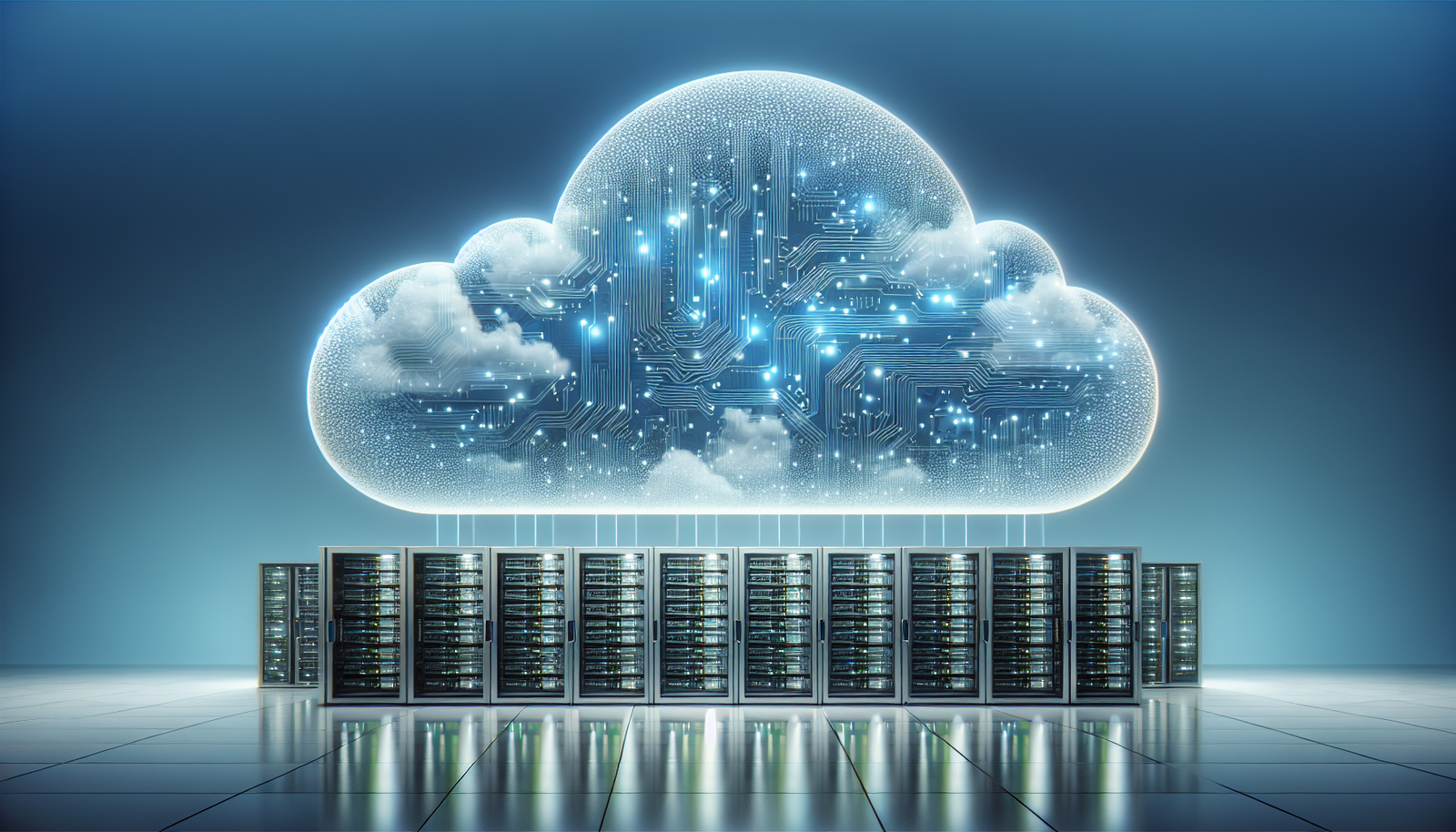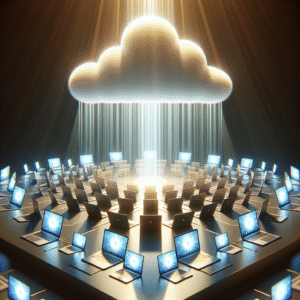Have you ever wondered how we manage to store massive amounts of data without running out of physical space? It’s fascinating to think about how cloud computing has transformed the way we approach data storage.
Understanding Cloud Computing
Let’s start with the basics. Cloud computing refers to the delivery of computing services over the internet, enabling on-demand access to resources such as servers, storage, databases, and more. Instead of keeping data on a local computer or server, I can store it in a virtual environment managed by third-party providers. This has completely changed how I think about and use technology.
Historical Context
To really appreciate the impact of cloud computing, it’s helpful to take a step back in time. Remember when we relied heavily on physical storage devices? I’m talking about CDs, USB drives, and the like. Those days seem like a distant memory now! The advent of high-speed internet and virtualization technologies paved the way for the cloud services we often take for granted today.
Types of Cloud Services
When I think of cloud computing, a few different service models come to mind. Each model serves distinct purposes and meets different needs.
Infrastructure as a Service (IaaS)
With IaaS, I can rent virtualized hardware over the internet. This service allows me to manage and control my virtualized resources without needing to worry about the underlying physical infrastructure. I can quickly scale my resources up or down depending on my needs.
| Feature | Benefits |
|---|---|
| Scalability | I can adjust resources easily. |
| Cost-effective | Pay only for what I use. |
| Control | Full management of systems. |
Platform as a Service (PaaS)
PaaS takes it a step further and provides not only hardware but also software tools. I find this particularly useful for developing applications. It allows me to focus on coding without getting bogged down with the infrastructure.
| Feature | Benefits |
|---|---|
| Development Tools | Access to built-in tools for easy coding. |
| Collaboration | Work seamlessly with teams. |
| Flexibility | Adjust development environment as needed. |
Software as a Service (SaaS)
SaaS is what I use most often in my everyday life. This model delivers software applications over the internet on a subscription basis. Think about the apps I use for email, productivity, or even social media. I no longer need to install software; I can simply access it from any device.
| Feature | Benefits |
|---|---|
| Accessibility | Use applications anywhere, anytime. |
| Updates | Automatic software updates. |
| Cost Savings | Lower upfront costs compared to traditional software. |
Advantages of Cloud Computing
What’s really exciting about cloud computing are the numerous benefits that come with it. I’ve experienced many of these advantages firsthand.
Cost Efficiency
One of the most significant benefits for me is cost savings. By moving to the cloud, I can avoid hefty investments in physical hardware. Instead, I can pay for only what I use. This flexibility allows me to allocate resources more efficiently, making every dollar count.
Data Security
While I may have been hesitant at first about storing my data remotely, I’ve come to understand that cloud providers take security seriously. They often implement advanced security measures, including encryption and regular backups, which give me peace of mind that my data is safer than ever.
Accessibility and Collaboration
In my personal and professional life, the ability to access data from anywhere is a game changer. Whether I’m working from home, in a coffee shop, or on vacation, I can easily retrieve the information I need. This accessibility also enhances collaboration with my team, enabling us to work together in real-time, regardless of our physical locations.
Automatic Updates
I no longer have to stress about keeping software up to date. Most cloud services manage updates automatically, ensuring that I’m always using the latest version and benefitting from the newest features without lifting a finger.
Disadvantages of Cloud Computing
Of course, no system is perfect, and there are always trade-offs. While I appreciate the convenience of cloud computing, I’ve also encountered some limitations.
Downtime Risks
One thing I’ve noticed is that cloud services can experience downtime. If a provider’s servers go down, my access to applications and data may be disrupted. Although reputable providers often have measures in place to minimize this risk, it’s always something to keep in mind.
Data Privacy Concerns
Storing sensitive information in the cloud can raise privacy issues. I find myself occasionally questioning how secure my data truly is. While providers often have robust security measures, the risk of data breaches remains a concern for both me and many others.
Limited Control
Especially with SaaS applications, I sometimes feel I’m at the mercy of the provider. If they decide to discontinue a service or change the pricing model, I have limited power. I always advise being aware of these potential limitations before fully committing.
Cloud Storage Solutions
When it comes to cloud storage, I’ve found several solutions that fit a range of needs. Here’s an overview of some popular options that I often consider.
Google Drive
Google Drive has become my go-to for both personal and professional storage. It offers seamless integration with other Google services like Docs and Sheets, which makes collaboration with colleagues a breeze. Plus, with 15GB of free storage, it’s a great starting point.
Dropbox
I find Dropbox to be particularly intuitive and user-friendly. It allows me to simply drag and drop files into a designated folder, making uploading a snap. They also offer great sharing features, which make it easy to collaborate with others.
Microsoft OneDrive
As someone who frequently uses Microsoft Office applications, OneDrive is a natural fit for me. It offers excellent integration with Office apps and provides a generous amount of free storage. Plus, I can easily share files with others and collaborate in real time.
iCloud
For those of us who are entrenched in the Apple ecosystem, iCloud is a fantastic option. It keeps my data synchronized across all my Apple devices, making it simple for me to access what I need, when I need it.
The Future of Cloud Computing
As I look ahead, I can only imagine how cloud computing will continue to evolve. Emerging technologies like artificial intelligence and machine learning are paving the way for even more innovative cloud solutions.
Edge Computing
One exciting development is edge computing. This technology processes data closer to where it’s generated rather than relying solely on centralized cloud servers. I see this as a game changer for applications needing real-time data processing, such as IoT devices.
Hybrid Cloud Solutions
Another trend that I find intriguing is the growth of hybrid cloud solutions. These systems combine both on-premises infrastructure and cloud services, giving organizations greater flexibility and control over their data. I believe this will become a popular approach for many businesses looking to strike a balance between security and convenience.
Enhanced Security Measures
As cloud computing continues to be adopted widely, I anticipate improvements in security measures. Service providers will invest in advanced technologies such as biometric authentication and enhanced encryption, ensuring my data remains safe and private.
Conclusion
In reflecting on my experiences with cloud computing, I can’t help but feel excited for the future. This technology has revolutionized how we store, access, and manage data. With its many advantages ranging from cost savings to increased collaboration, cloud computing has become an essential part of my daily life.
While challenges such as data privacy and downtime still exist, I believe that ongoing advancements will continue to address these concerns. As I embrace the evolving digital landscape, I look forward to seeing what the future of cloud computing holds, and how it can continue to improve my personal and professional life.
Isn’t it amazing to think about how far we’ve come? I can hardly wait to see where this journey takes us next!






